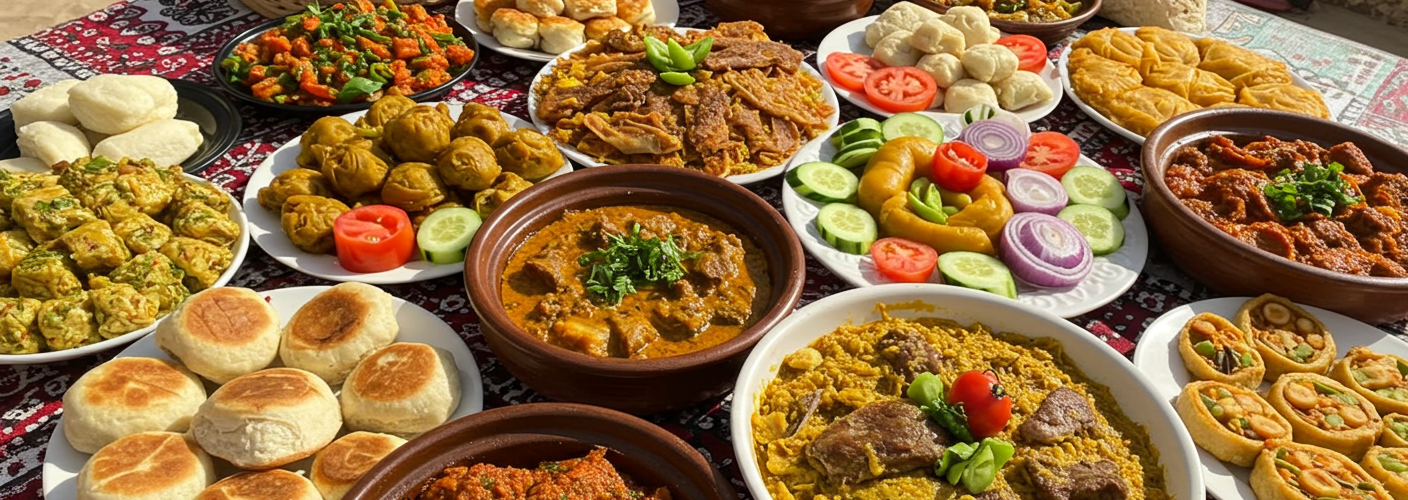Yemen, a country steeped in history and culture, holds a treasure trove of culinary delights that reflect its diverse heritage and geographical diversity. The food of Yemen is as vibrant and complex as its landscape, offering a unique gastronomic experience that highlights rich flavors, fresh ingredients, and traditional cooking methods. In this article, we will delve into some of the quintessential dishes that define Yemeni cuisine, celebrating the essence of a nation through its food.
At the heart of Yemeni cooking is the use of spices, which serves to create depth and complexity in every dish. One of the most renowned spices used in Yemeni kitchens is Hawaij, a blend of turmeric, black pepper, cumin, and cardamom, which infuses various dishes with warmth and aroma.
A classic dish synonymous with Yemeni cuisine is Mandi, a traditional rice dish usually made with marinated meat—often chicken or lamb—cooked with spices and served over saffron-flavored rice. It’s not just a meal; it’s an event, often served to honor guests at celebrations and gatherings. The meat is slow-cooked to tender perfection, allowing the flavors to blend beautifully, and it’s typically garnished with fried onions and nuts, adding textures that elevate the dish’s appeal.
Another must-try Yemeni specialty is Saltah, a hearty stew that showcases the country’s love for robust flavors. Made with lamb or chicken, Saltah is distinctive for its zhug, a spicy green sauce made from hot peppers, coriander, and garlic, which can be added to the stew for an extra kick. Traditionally served with bread, this dish symbolizes home-cooked comfort food for Yemenis and is often enjoyed with family around a shared plate, showcasing the community aspect of dining.
Yemen is also famous for its unique breads, each with distinct textures and flavors. Malawah, a flaky, buttery flatbread, is perfect for scooping up stews or wrapping around freshly grilled meats. It reflects the traditional methods of bread-making that have been passed down through generations. Another popular bread is Lahoh, a spongy pancake-like bread best enjoyed hot, often paired with honey or as an accompaniment to savory dishes.
Tea plays a significant role in Yemeni culture as well. Traditional Yemeni tea, often spiced with cardamom or ginger, is an essential part of social gatherings. It is served sweetened, bringing warmth and hospitality to visitors. The act of brewing and serving tea is seen as a gesture of friendship and respect, highlighting the importance of community in Yemeni life.
No discussion of Yemeni cuisine would be complete without mentioning the rich variety of snacks and street foods available. Items such as sambusa, savory pastries filled with spiced potatoes or meat, are a staple during holidays, and can be found at food stalls. These delicious snacks perfectly illustrate the fusion of flavors that characterizes Yemeni cooking.
In conclusion, Yemeni food is a delightful exploration of flavors and culture. It reflects the country’s history, traditions, and the enduring spirit of its people. Each dish tells a story, and the experience of sharing these meals brings individuals and communities together. For those looking to expand their culinary horizons, diving into Yemeni cuisine promises a rich and fulfilling journey of tastes and textures that is sure to leave a lasting impression.




Add comment